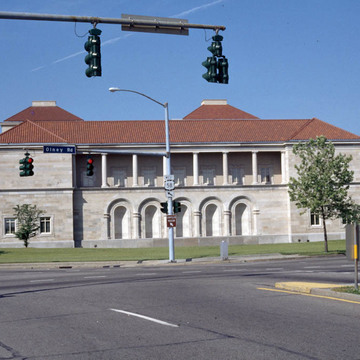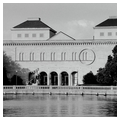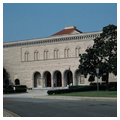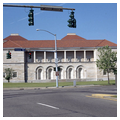Standing serenely at the end of the Hague, the Chrysler Museum of Art could have been depicted in a veduta by Canaletto; only the gondolas are missing. Although seemingly timeless, the view is in fact relatively recent. The unified appearance of the building and its many parts is the result one of the more felicitous episodes in recent postmodern architecture.
The establishment of an art museum in Norfolk was the direct result of the efforts of Irene Leache and her companion, Anna Cogswell
Stylistically, the main limestone block of the museum resembles an early Italian Renaissance palazzo with its open arcade on the ground level and blind windows with pointed tracery on the upper level. The integrity of the design was compromised in the 1960s and 1970s by two major additions, however. Constructed of brick and outlined in limestone, the Houston Wing extended to the north and east of the main block, with a tower at the connection and a new entrance facing Olney Road away from the Hague. A second addition was built in the mid-1970s to accommodate the collection of Walter P. Chrysler, after whom the museum was renamed. Whereas the earlier addition attempted to blend somewhat with the earlier structure, this Brutalist addition, with its cantilevered northeast corner, seemed to stand defiantly apart from it. A major renovation and expansion in the 1980s by the Washington, D.C., firm of Hartman-Cox effectively masked these two modernist additions behind new construction that successfully harmonizes with the original block. A second tower was added to balance the first, and the entrance facing the Hague was restored. The open cloister at the center of the original block was covered with a skylight, supported by wooden trusses, to form a new inner lobby. The centerpiece of the expansion is a new north facade, early Florentine Renaissance in inspiration, that incorporates a blind arcade on the lower level with an open colonnade above it.

























